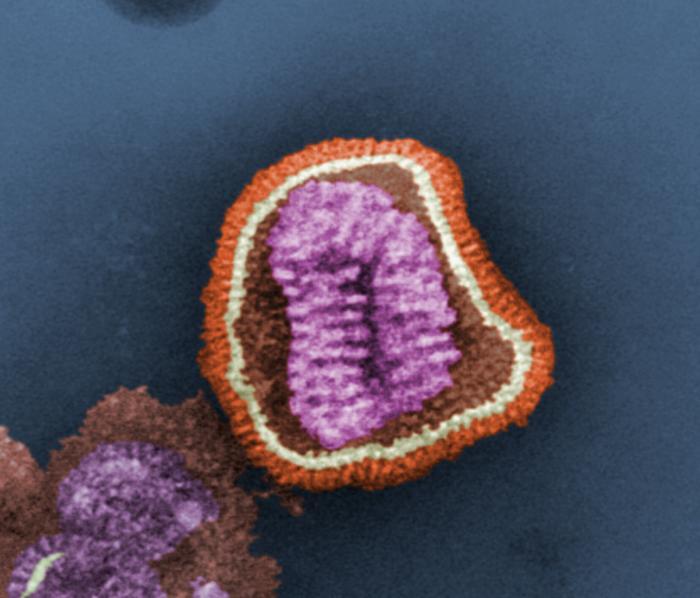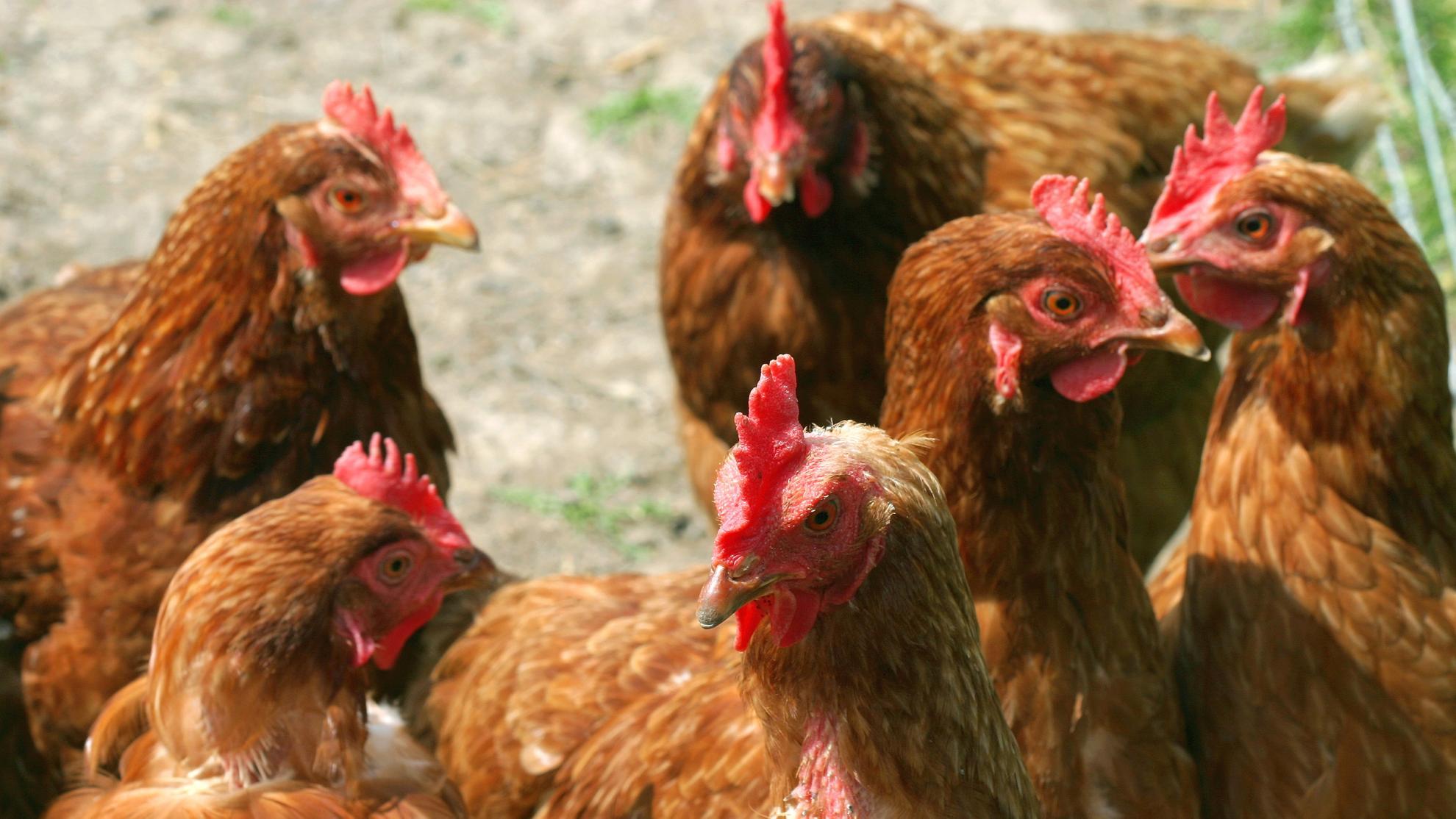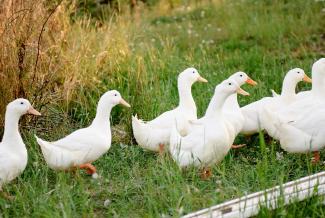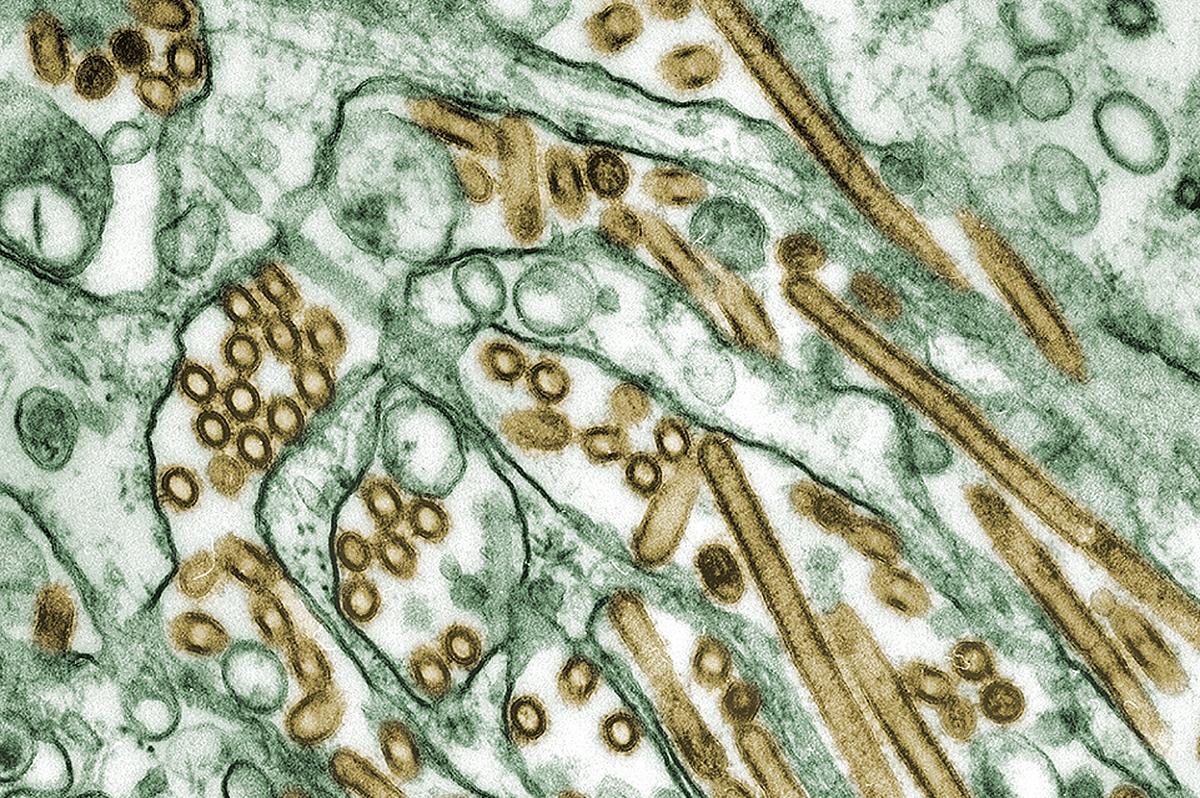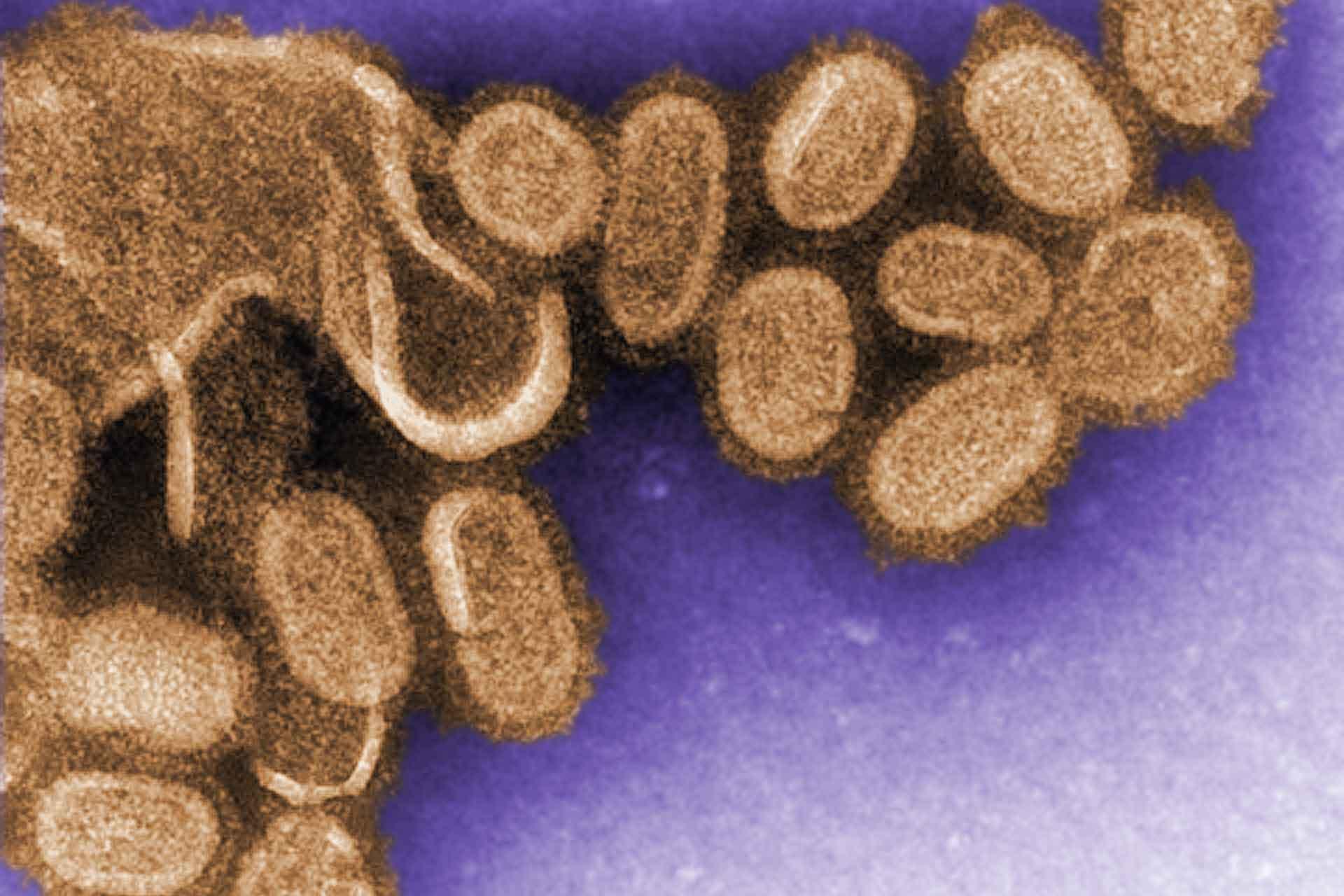Avian influenza (AI) viruses, commonly known as bird flu, infect a wide range of hosts, including humans and swine.
The natural reservoir of avian influenza (AI) viruses is in populations of wild aquatic birds such as ducks and shorebirds.
The disease spreads by direct contact or through contaminated faeces and bodily fluids.
New AI virus strains frequently arise, which means there is a constant risk that one of these new strains may spread easily among people, and cause a pandemic. Previous influenza pandemics of 1918, 1957 and 1968 were all thought to have been caused by avian influenza viruses.
High pathogenicity avian influenza (HPAI) is spread across the globe, circulating at a high level in North America, Asia, Europe and West Africa, and most recently South America and the Antarctic.
Low Pathogenic avian influenza (LPAI) is endemic in poultry in Asia, the Middle East, Africa, and North America with poultry populations being infected with strains such as H9N2. Due to the migratory patterns of wild bird species, it is difficult to predict where strains may spread in the future.
Please see the Defra website for advice on how to spot and report the disease.
Clinical signs
AI strains can be categorised into two types;
High pathogenicity avian influenza (HPAI) is the more serious of the two, often being fatal in birds. Clinical signs include:
- Swollen head
- Blue discolouration of neck and throat
- Loss of appetite
- Respiratory distress such as gaping beak, coughing, sneezing, gurgling, rattling
- Diarrhoea
- Fewer eggs laid
- Increased mortality
- • Neurological signs such as tremors or twisted neck
Low pathogenic avian influenza (LPAI) is less serious, with the severity depending on the species of bird and whether it has other co-infections. Clinical signs include mild breathing problems, but affected birds will not always display these signs (for example, ducks and geese can often be asymptomatic).
Virology
AI viruses are members of the family Orthmyxoviridae, Type A, which is subdivided into categories (strains) depending on the outer proteins H (Haemagglutinin) and N (Neuraminidase).
These proteins can come in different combinations resulting in different strains, for example H5N1, H9N2. Influenza A viruses have a single stranded RNA genome that is spilt into eight different segments, which are surrounded by a protein matrix and a lipid envelope.
Pirbright's research on avian influenza
Avian Influenza continues to be a threat to the worldwide poultry industry. The viruses responsible for all four of the worldwide human influenza pandemics seen in the 20th and 21st centuries have originated from birds. An effective control strategy for avian influenza in domesticated poultry is therefore an essential element in the protection of both bird and human populations.
Many groups at the Institute work on and around AI. Together they are researching areas such as how LPAI can change into HPAI, how AI can jump from birds into humans or other mammals, and how bird immune systems react to the virus. This work is able to inform better diagnostics, breeding and vaccination. Additionally, the work focuses on enhancing the effectiveness of vaccines and diagnostics.
